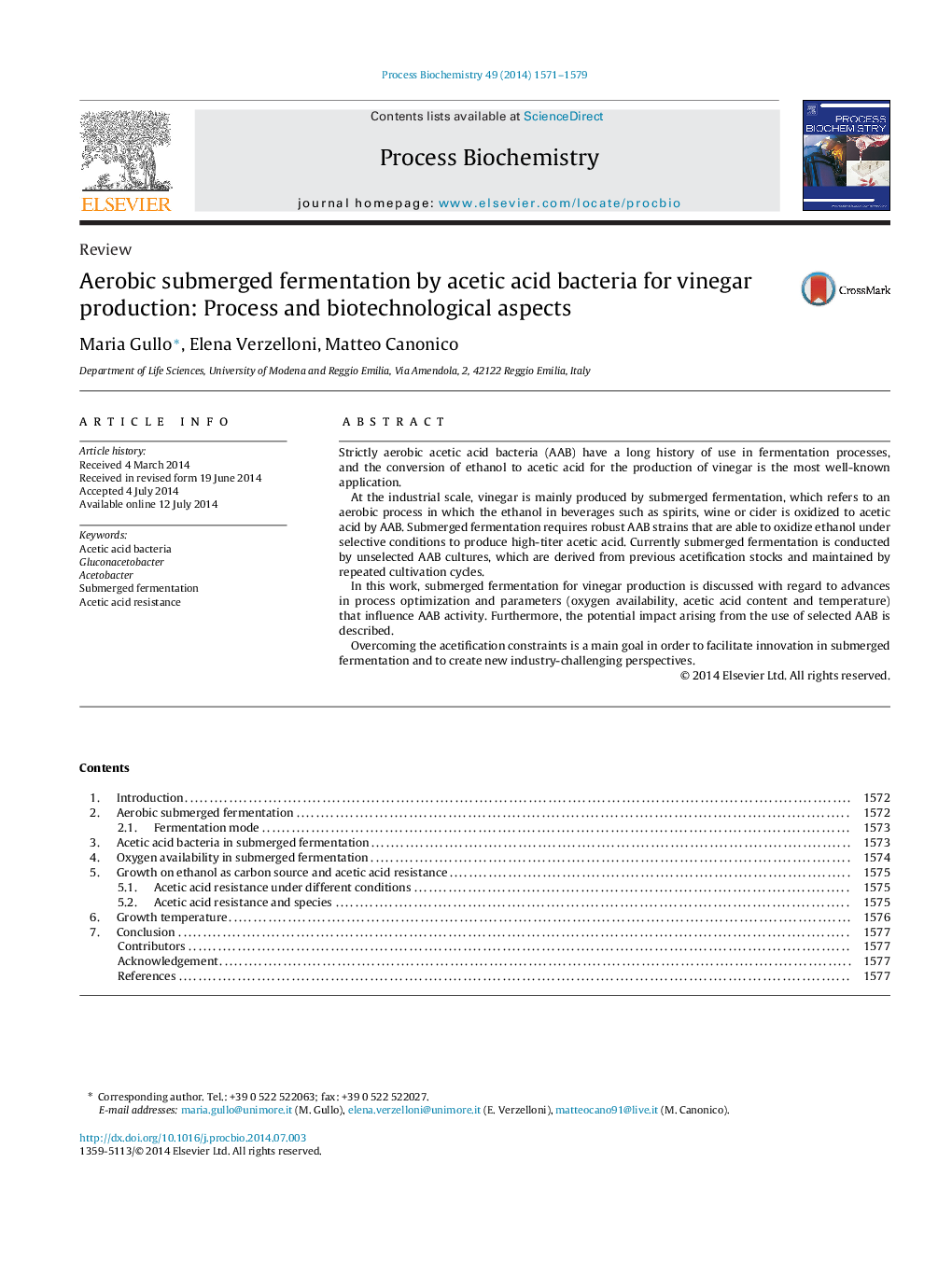| کد مقاله | کد نشریه | سال انتشار | مقاله انگلیسی | نسخه تمام متن |
|---|---|---|---|---|
| 34486 | 45030 | 2014 | 9 صفحه PDF | دانلود رایگان |
• Unselected acetic acid bacteria are applied to produce vinegar.
• Submerged fermentation provides the highest acetic acid titer.
• Robust industrial strains must be resistant to acetic acid and ethanol.
• Overcoming acetification constraints by selected acetic acid bacteria.
Strictly aerobic acetic acid bacteria (AAB) have a long history of use in fermentation processes, and the conversion of ethanol to acetic acid for the production of vinegar is the most well-known application.At the industrial scale, vinegar is mainly produced by submerged fermentation, which refers to an aerobic process in which the ethanol in beverages such as spirits, wine or cider is oxidized to acetic acid by AAB. Submerged fermentation requires robust AAB strains that are able to oxidize ethanol under selective conditions to produce high-titer acetic acid. Currently submerged fermentation is conducted by unselected AAB cultures, which are derived from previous acetification stocks and maintained by repeated cultivation cycles.In this work, submerged fermentation for vinegar production is discussed with regard to advances in process optimization and parameters (oxygen availability, acetic acid content and temperature) that influence AAB activity. Furthermore, the potential impact arising from the use of selected AAB is described.Overcoming the acetification constraints is a main goal in order to facilitate innovation in submerged fermentation and to create new industry-challenging perspectives.
Journal: Process Biochemistry - Volume 49, Issue 10, October 2014, Pages 1571–1579
